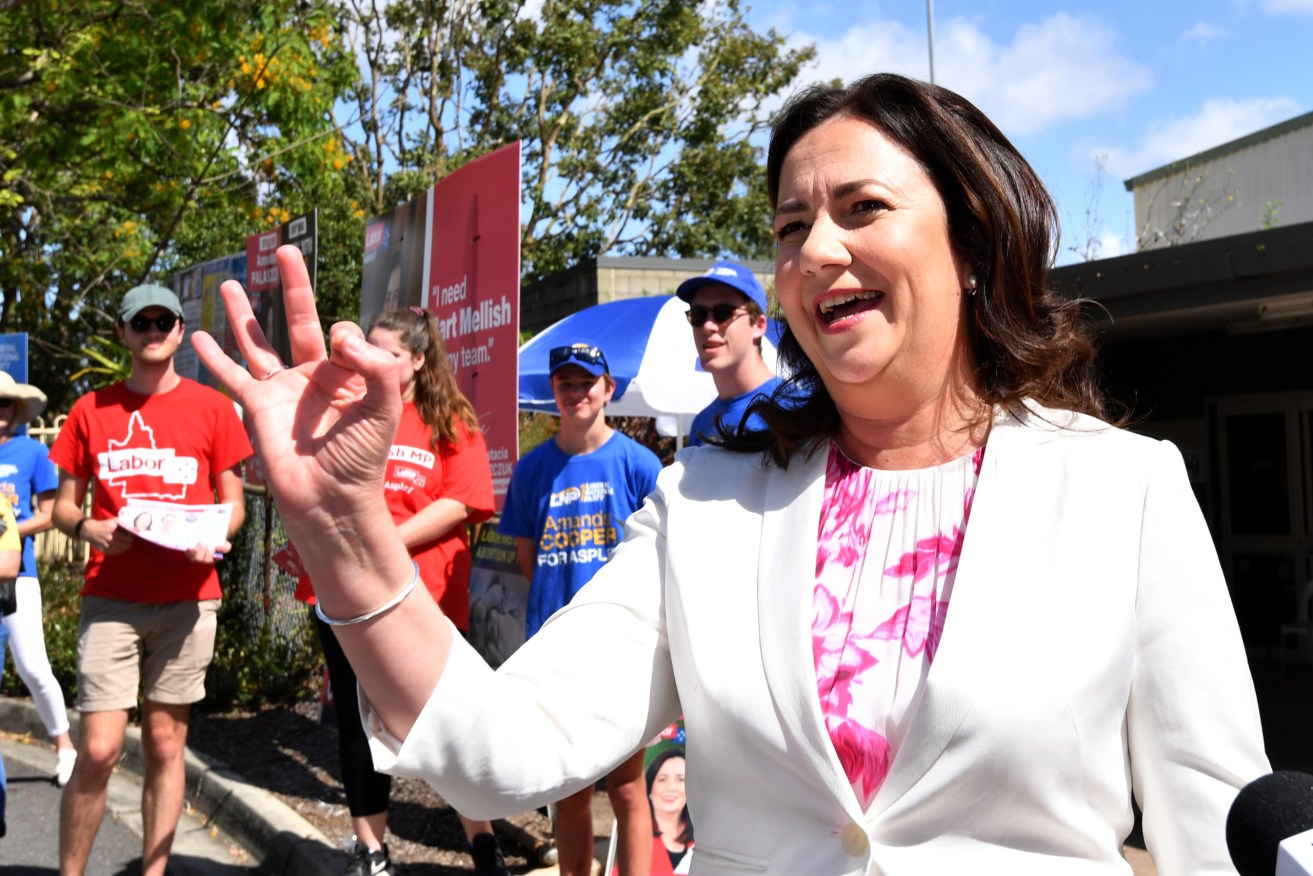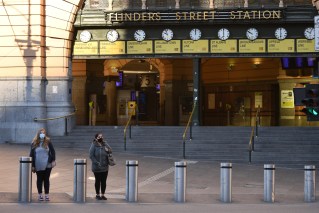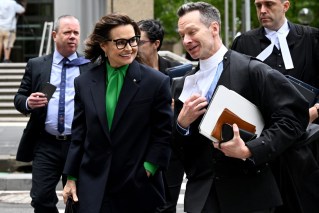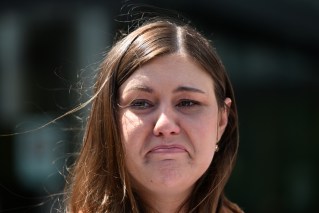As other states shoot for the stars, Queensland can’t afford business as usual
The Palaszczuk Government has started its third term in office with a steady-as-she-goes approach, which may prove politically problematic once the glow of victory wears off, writes Dennis Atkins


Premier Annastacia Palaszczuk led Labor to a third term in power. (Photo: AAP Image/Darren England)
Annastacia Palaszczuk and her ministers have just begun something that’s novel for a state government – a four-year fixed term unencumbered by the otherwise disruptive vagaries of politics.
No wonder it was hard to catch a glimpse of any of them not smiling as parliament resumed last week.
An increased, relatively comfortable majority and a disheartened, diminished Opposition, must make the world look like an open road.
It’s understandable and the glow of this victory will take time to wear off but wear off it will. It may happen quite quickly, with a portentous and painful voter sting.
Four-year terms on the state stage are novel, but for local government, this way of doing things is about to enter its third decade.
Local government authorities have had five four-year terms since 2000, embarking on the fifth earlier this year.
Close observers of this new electoral landscape for councils issue a couple of not-to-be-ignored warnings for those plying their trade down the leafy end of George Street.
Local councils have learnt voters are inclined to mark them harder than they felt they did with three-year terms. People worry about politicians having power for this extended period and express concern about the social and economic impact of decisions.
Distilled down, the message is clear: tread carefully and don’t take the voters for granted. Take people with you – don’t assume the public will follow quietly.
A week might be a long time in politics, as the adage goes, but in a four-year term, it’s the blink of an eye.
This said, we can make some casual assessments of how the Labor Government is looking after one week back in the 160-year-old, French Renaissance sandstone edifice.
Primarily, this government doesn’t seem to have an agenda any more adventurous or ambitious than the “steady as she goes” approach that barely sufficed during its first five years in office.
If you had to offer a three-word slogan for the third Palaszczuk Government, it would be “business as usual”. This is extraordinary and, for Labor’s longer-term prospects, a worry.
The budget handed down by Cameron Dick – seven months into a job he assumed after the demise of former deputy premier Jackie Trad – was dull and barely worthy.
While other, comparable state governments have been imaginative and bold, Queensland’s Labor Government offered something that looked more “paint by numbers” than “what can we do with a once in a 100-year opportunity?”.
New South Wales reformed state taxes, is doing away with stamp duty, and rolled out an imaginative energy and environment policy that leaves other states behind.
The tax reform has been hailed by almost everyone and the energy scheme is winning plaudits and drawing sneers from federal Nationals politicians.
The energy plan promises a $32 billion private investment bonanza, aimed at providing 12 gigawatts of energy storage – led by pumped hydro – in the decade ahead.
The plan could take NSW from a current renewable energy share of 16 percent of all generation to 60 percent within 10 years.
Victoria grabbed the lever marked “big” and delivered with a truly bold social and affordable housing package at the top of the budget to-do list.
Outlaying $5.3 billion, the Andrews Government pledged 9300 new social housing dwellings (replacing old stock and building new homes) and a further 2900 affordable and low-cost homes – all with an emphasis on locating this social infrastructure near jobs and transport.
Victoria also managed to find $1.6 billion to upgrade 39 specialist schools across the state – a measure which would double to 55,000 the number of youngsters receiving targeted education while creating more than 1700 new teaching and support jobs.
There were, in both NSW and Victoria, other measures and initiatives which picked up the government-in-action ball and ran down the field.
People are as supportive of government acting and spending as anyone has seen in decades, due to the need to protect the health of individuals and the economy. There has seldom been such a golden opportunity to do things.
Queensland Treasurer Dick chortled about his debt and deficits being lower and smaller than NSW and Victoria, issuing undergraduate tweets to flaunt his hip side.
There’s a reason Queensland has a smaller debt across the out years of budgeting and is posting more modest deficits – it’s because our government has been less ambitious and less imaginative.
As “cookie-cutter” as the government’s budget turned out, most of the debt being racked up is what economists call “bad debt” – money borrowed for running public services that cannot be matched by income from various sources.
Out of the $60 billion in new debt that’s on the books, two in every three of those dollars is bad debt while the other dollar is going to infrastructure, which will create a revenue stream or add to productive growth.
It mightn’t fit in a tweet but if it did it would still look bad.
So while the Queensland budget is a disappointing “business as usual” affair, it could also be dubbed the Great Missed Opportunity of 2020.












